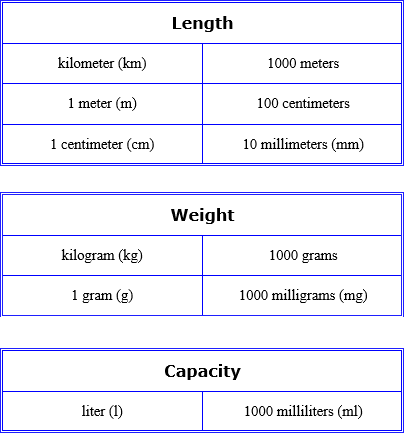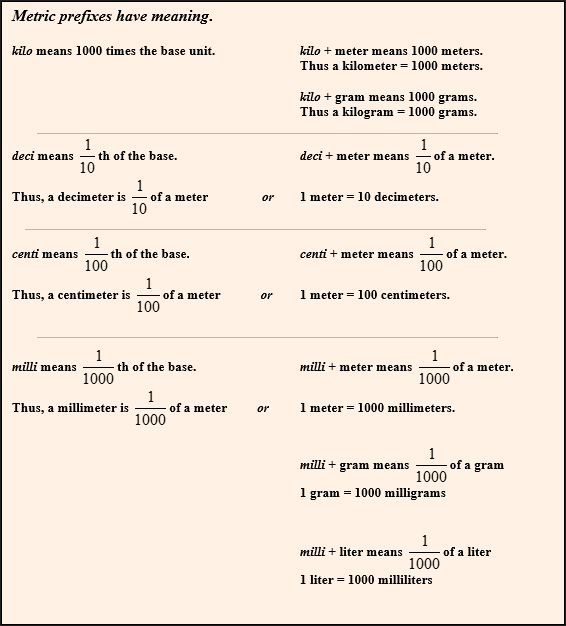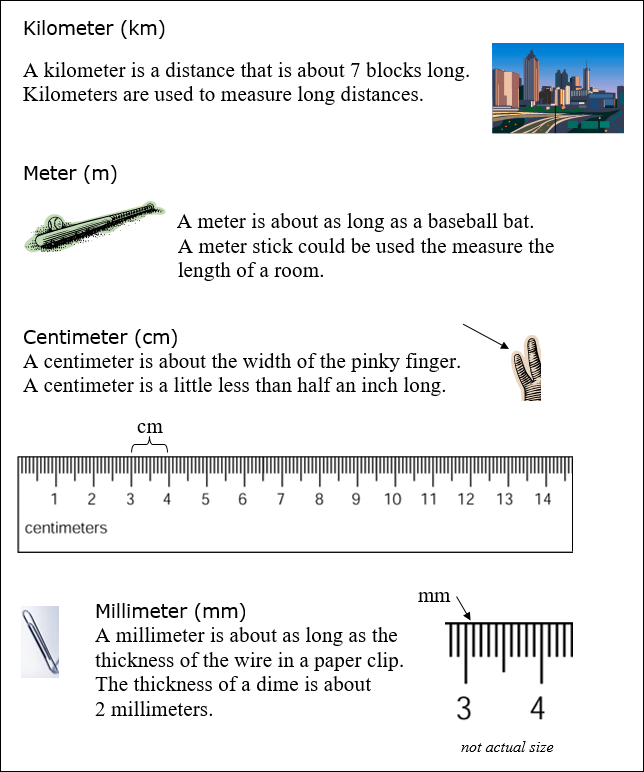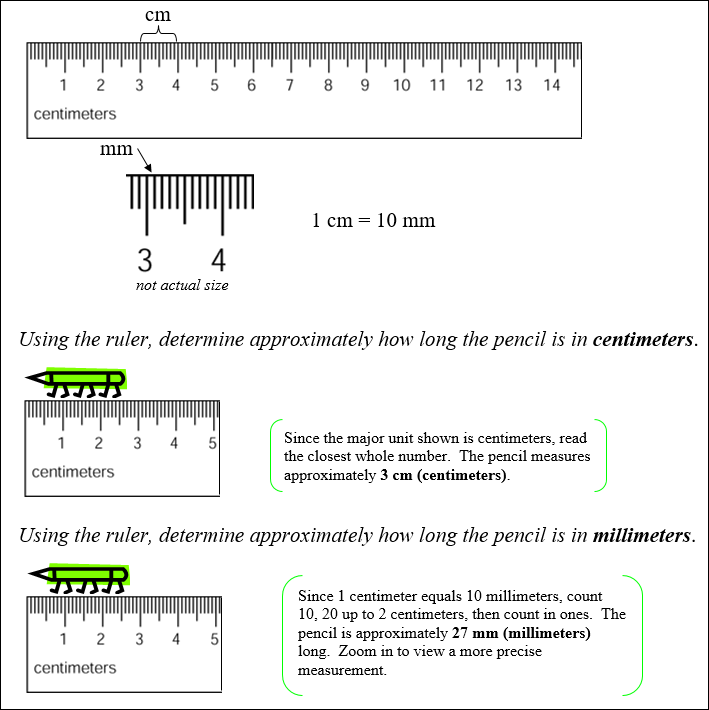Metric System Conversion Tables

MEASUREMENT – METRIC SYSTEM
In the world of science and medicine, the metric system of measurement is used. Also, many European countries use the metric system rather than the customary measurement system. We will study metric units of length based on the meter, metric units of weight based on gram, and metric units of capacity based on the liter.
We will begin with how the metric units are named and the meaning of their prefixes.
The metric units of length that we will study are kilometer, meter, centimeter, millimeter. We will measure length using a ruler that shows centimeter and millimeter divisions.
Sometimes, we will need to convert from one metric unit to a different metric unit. First, we’ll look at expressing a large unit into a smaller unit and vice versa, look at expressing a small unit into a larger unit.
Metric System Conversion Tables  |
Metric System Prefixes  |
| Metric Units of Length
The metric system of measurement is used by scientists, doctors, and people of many other countries.  |
| Measuring with Metric Units of Length Look closely at the rulers below to view centimeters and millimeters. A centimeter is the length from one number's notch to the next number's notch. One section of the ruler is enlarged to show millimeters. Count the spaces between the 3 notch and the 4 notch and note that there are 10 millimeters in a centimeter.  |
Converting Metric Units of Length Using Multiplication
Large Units to Small Units
To express a larger unit as a smaller unit, multiply by the conversion factor. |
Converting Metric Units of Length Using Division
Small Units to Large Units
To express a smaller unit as a larger unit, divide by the conversion factor.
The metric units are arranged on the steps in order from smallest unit to largest. The conversion factor is beside the arrow. |
 |
| Unit 20 Converting English and Metric Worksheet |
| Click here to watch a video on metric units. |
| Unit 20 List It Activity |